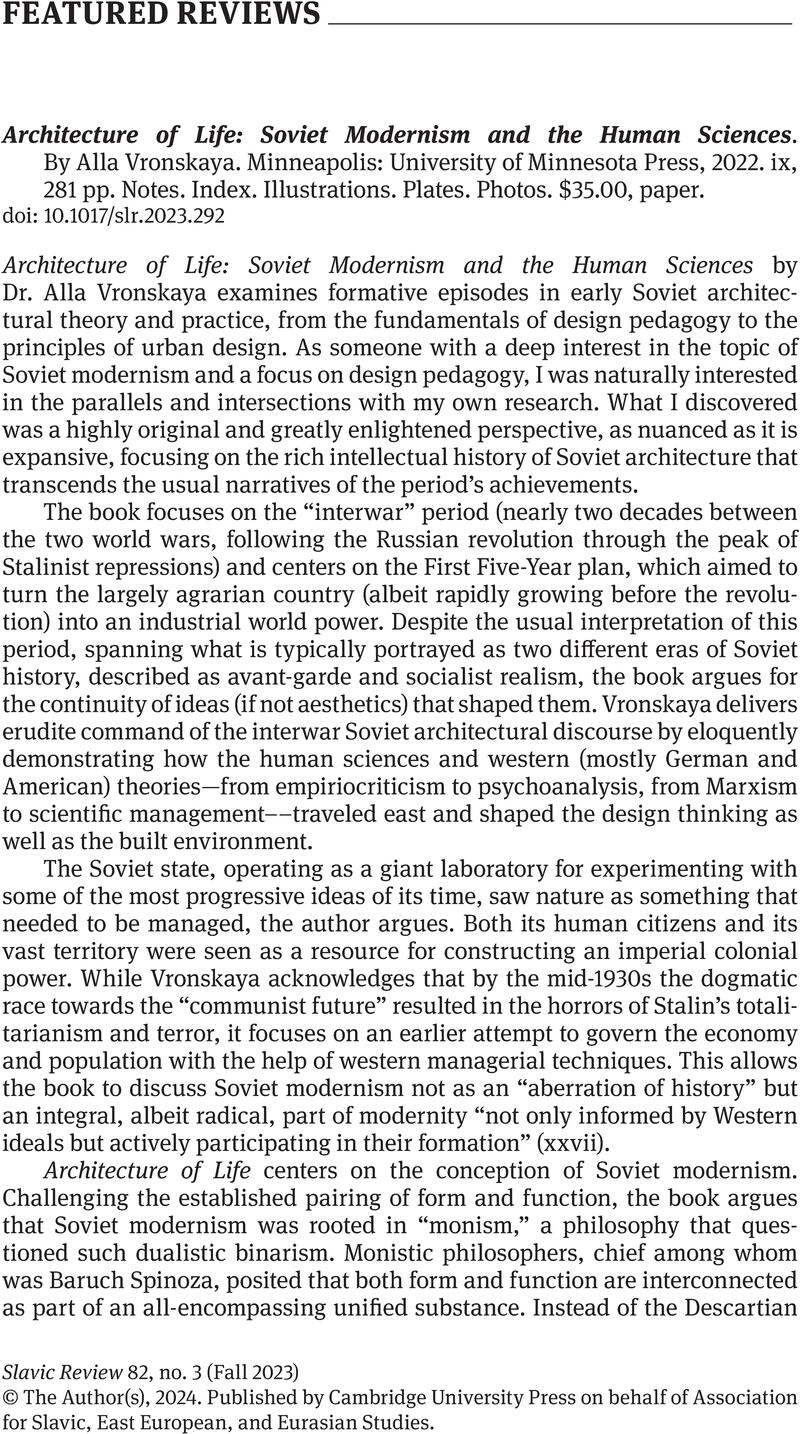No CrossRef data available.
Article contents
Architecture of Life: Soviet Modernism and the Human Sciences. By Alla Vronskaya. Minneapolis: University of Minnesota Press, 2022. ix, 281 pp. Notes. Index. Illustrations. Plates. Photos. $35.00, paper.
Review products
Architecture of Life: Soviet Modernism and the Human Sciences. By Alla Vronskaya. Minneapolis: University of Minnesota Press, 2022. ix, 281 pp. Notes. Index. Illustrations. Plates. Photos. $35.00, paper.
Published online by Cambridge University Press: 26 January 2024
Abstract
An abstract is not available for this content so a preview has been provided. Please use the Get access link above for information on how to access this content.

- Type
- Featured Reviews
- Information
- Copyright
- Copyright © The Author(s), 2024. Published by Cambridge University Press on behalf of Association for Slavic, East European, and Eurasian Studies


